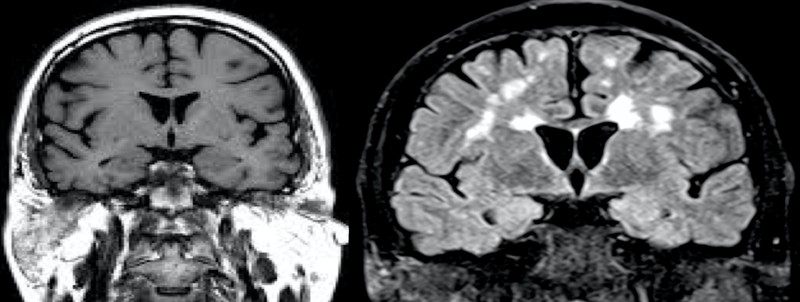maximus otter
Recovering policeman
- Joined
- Aug 9, 2001
- Messages
- 13,944
A professor has been testing the brains of people who say they’ve experienced a UFO encounter — and these are the symptoms they display.

Dr. Garry Nolan, a Professor of Pathology at Stanford University who has published more than 300 research articles and holds 40 US patents, has spent the past decade analyzing materials from alleged Unidentified Aerial Phenomenon (UAP).
His involvement with UAP began after he was asked to use his “blood analysis instrumentation” to help with cases of pilots who were close to alleged UAPs and “horrible” brain damage.
When asked if he could describe the more abnormal effects on the brains observed with the MRIs, Nolan said: “If you’ve ever looked at an MRI of somebody with multiple sclerosis, there’s something called white matter disease. It’s scarring.It’s a big white blob, or multiple white blobs, scattered throughout the MRI. It’s essentially dead tissue where the immune system has attacked the brain,” he continued.

Left - Normal brain; Right - Injury and resulting white matter disease. Photo: Anonymous.
“That’s probably the closest thing that you could come to if you wanted to look at a snapshot from one of these individuals. You can pretty quickly see that there’s something wrong.”
Approximately 100 patients, mostly “defense or governmental personnel or people working in the aerospace industry,” were analyzed.
Ultimately, his team learned the people, who they originally thought were damaged, had an “over-connection of neurons between the head of the caudate and the putamen.”
The number of people that had this “over-connection” led to the open question: “Did coming in contact with whatever it was cause it or not?”
https://nypost.com/2021/12/12/the-brains-of-people-who-say-theyve-had-a-ufo-encounter/
- Quoting from longer article here:
https://www.vice.com/en/article/n7n...nalyzing-anomalous-materials-from-ufo-crashes
maximus otter

Dr. Garry Nolan, a Professor of Pathology at Stanford University who has published more than 300 research articles and holds 40 US patents, has spent the past decade analyzing materials from alleged Unidentified Aerial Phenomenon (UAP).
His involvement with UAP began after he was asked to use his “blood analysis instrumentation” to help with cases of pilots who were close to alleged UAPs and “horrible” brain damage.
When asked if he could describe the more abnormal effects on the brains observed with the MRIs, Nolan said: “If you’ve ever looked at an MRI of somebody with multiple sclerosis, there’s something called white matter disease. It’s scarring.It’s a big white blob, or multiple white blobs, scattered throughout the MRI. It’s essentially dead tissue where the immune system has attacked the brain,” he continued.

Left - Normal brain; Right - Injury and resulting white matter disease. Photo: Anonymous.
“That’s probably the closest thing that you could come to if you wanted to look at a snapshot from one of these individuals. You can pretty quickly see that there’s something wrong.”
Approximately 100 patients, mostly “defense or governmental personnel or people working in the aerospace industry,” were analyzed.
Ultimately, his team learned the people, who they originally thought were damaged, had an “over-connection of neurons between the head of the caudate and the putamen.”
The number of people that had this “over-connection” led to the open question: “Did coming in contact with whatever it was cause it or not?”
https://nypost.com/2021/12/12/the-brains-of-people-who-say-theyve-had-a-ufo-encounter/
- Quoting from longer article here:
https://www.vice.com/en/article/n7n...nalyzing-anomalous-materials-from-ufo-crashes
maximus otter


